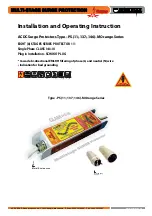
62 - ENGLISH
3) Press
qw
to adjust the value.
f
The adjustment values will change between [-16] to [+16]. Adjust so that the amount of interference is at a
minimum.
Note
f
Certain signals may not be adjustable.
f
Optimal value may not be achieved if the output from the input computer is unstable.
f
To project a signal with dot clock frequency with 162 MHz or higher, noise may not disappear even if [CLOCK PHASE] is adjusted.
[OVER SCAN]
(Only for movie-based signal input)
Use this function when characters or pictures are cropped near the periphery of the projected image.
1) Press
as
to select [OVER SCAN].
2) Press
qw
or the <ENTER> button.
f
The
[OVER SCAN]
individual adjustment screen is displayed.
3) Press
qw
to adjust the level.
f
The adjustment values are [0] to [+3].
[ASPECT]
You can switch the aspect ratio of the image.
The aspect ratio is switched within the screen range selected in the [DISPLAY OPTION] menu → [SCREEN
SETTING] → [SCREEN FORMAT]. Set [SCREEN FORMAT] first. (
Æ
page 67)
1) Press
as
to select [ASPECT].
2) Press
qw
or the <ENTER> button.
f
The
[ASPECT]
individual adjustment screen is displayed.
3) Press
qw
to switch the item.
f
The items will switch each time you press the button.
[AUTO]*
1
The aspect ratio is automatically switched to the optimum aspect ratio when an aspect ratio identifier is
included in the input signal.
[NORMAL]
Displays images without changing the aspect ratio of the input signals.
[WIDE]
Displays images with the aspect ratio converted to 16:9 when standard signals*
2
are input.
Display images without changing the aspect ratio when wide-screen signals*
3
are input.
[H FIT]
Displays images using the entire width of the screen. When signals have the aspect ratio vertically longer
than the aspect ratio of the screen selected in [SCREEN FORMAT], the images are displayed with the top and
bottom parts cut off.
[V FIT]
Displays the height of the panel pixels vertically without changing the aspect ratio when wide-screen signals
are input. When signals have the aspect ratio horizontally longer than the aspect ratio of the screen, the
images are displayed with the right and left parts cut off.
[FULL]
The image is projected using all the panel (screen) pixels. The input signals are converted to the aspect ratio
of the panel (screen).
[NATIVE]
Displays images without changing the resolution of the input signals.
*1 Only for Video (NTSC) and 480i (YC
B
C
R
) signals input
*2 Standard signals are input signals with an aspect ratio of 4:3 or 5:4.
*3 Wide-screen signals are input signals with an aspect ratio of 16:10, 16:9 or 15:9.
Note
f
The image size may be switched abnormally when [AUTO] is selected, please set to [NORMAL] or [WIDE] according to the input signal.
f
Some size modes are not available for certain types of input signals.
f
If an aspect ratio which is different from the aspect ratio for the input signals is selected, the images will appear differently from the originals.
Be careful of this when selecting the aspect ratio.
f
If using the projector in places such as cafes or hotels to display programs for a commercial purpose or for public presentation, note that
adjusting the aspect ratio or using the zoom function to change the screen images may be an infringement of the rights of the original
copyright owner for that program under copyright protection laws. Take care when using a function of the projector such as the aspect ratio
adjustment and zoom function.
f
If conventional (normal) 4:3 images which are not wide-screen images are displayed on a wide screen, the edges of the images may not
be visible or they may become distorted. Such images should be viewed as with an aspect ratio of 4:3 in the original format intended by the
creator of the images.
Chapter 4 Settings - [POSITION] menu
Содержание PT-TX440
Страница 34: ...34 ENGLISH Chapter 3 Basic Operations This chapter describes basic operations to start with...
Страница 88: ...88 ENGLISH Chapter 5 Operation of Function This chapter describes the operation methods of some functions...
Страница 122: ...122 ENGLISH Chapter 7 Appendix This chapter describes specifications and after sales service for the projector...
















































